DEFINITION OF TERMS:
- KEYSTONE means they are listed by National Wildlife Federation as core plants for a wildlife garden in my ecoregion (Ecoregion 8).
- NOT QUITE NATIVE means they are slightly out of range but adjacent to NYS as determined by GoBotany and NY Flora Atlas.
- Otherwise the plant is a NY-native or native to the area noted.
MIDWEST NATIVE: Bradbury’s bee balm (Monarda bradburiana)
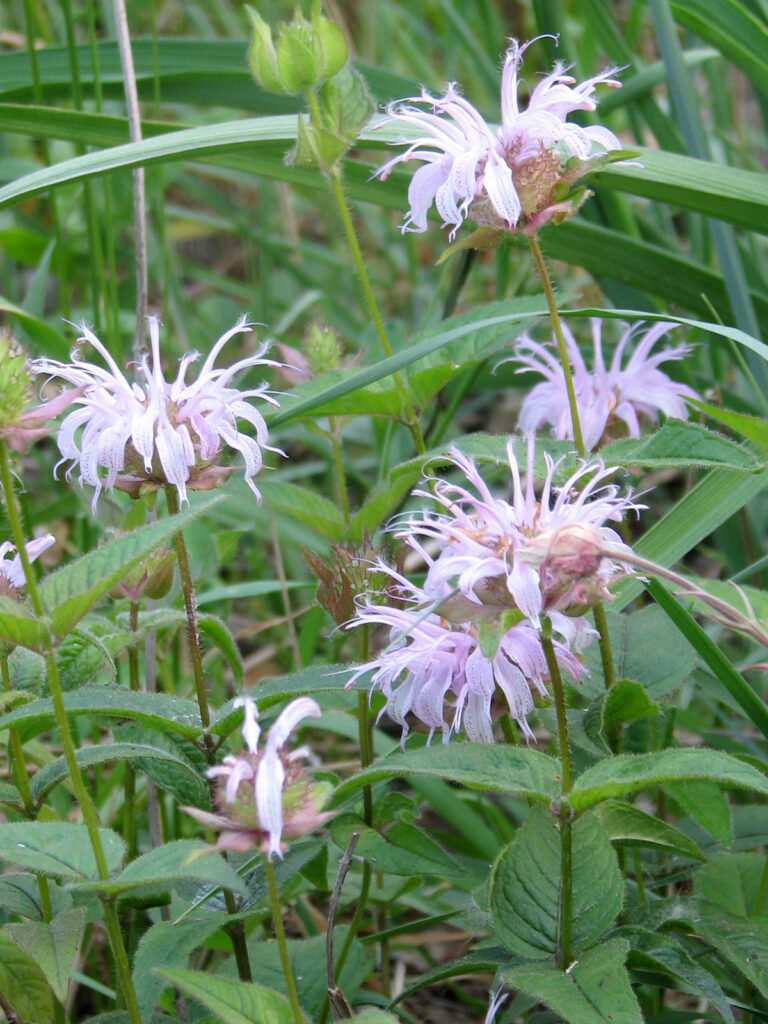
This is an early-flowering bee balm. I discovered that it’s native to the midwest, not here, and I don’t remember where I got it.
It doesn’t seem particularly vigorous, and I have just a few stems of it left. I won’t replace it!
Fortunately, we have other beautiful monardas that are native here in CNY.
Wildlife: Hummingbirds
** SPECIAL VALUE TO NATIVE BEES **
** SPECIAL VALUE TO BUMBLE BEES **
- Learn more:
- Wildflower Center: Bradbury’s bee balm
Oswego tea aka scarlet beebalm (Monarda didyma)
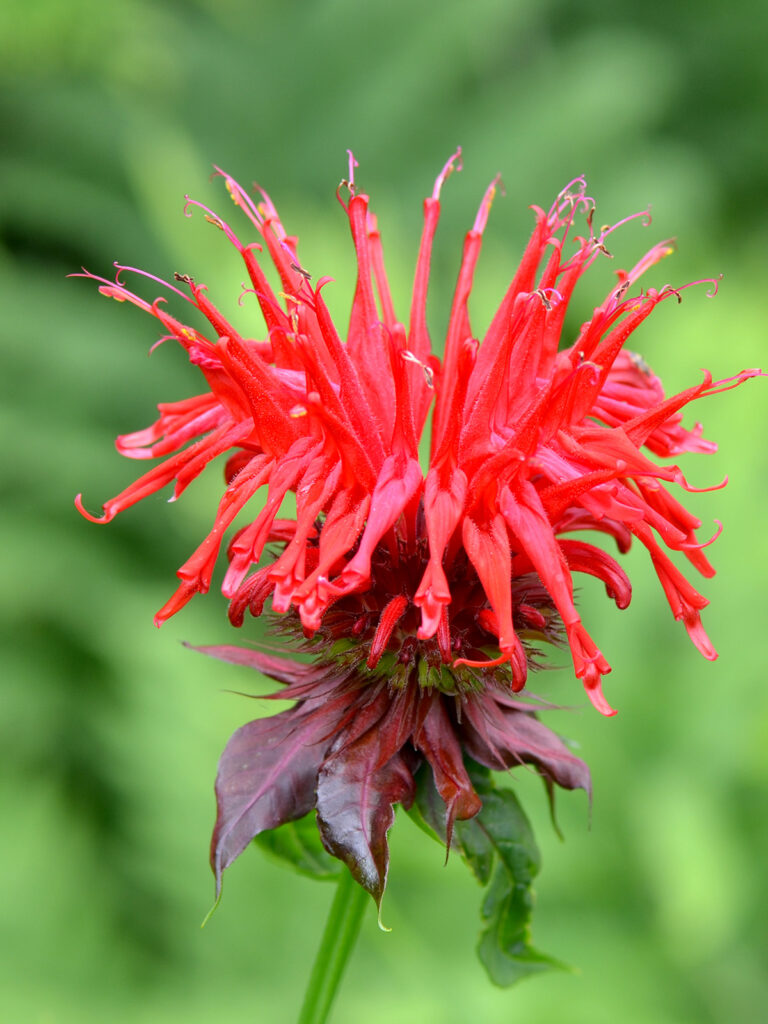
Monarda is in the mint family, so they’re easy to grow, and they’re a wonderful source of nectar. Hummingbirds love them!
(BONUS: Deer don’t like minty foliage, such as that of any of the monardas!)
They spread underground, but not aggressively, so I don’t consider it a problem. If I get too many in one spot, I transplant them to other parts of the yard where I need to fill space and a splash of color. I’ve never had to throw any out yet!
Wildlife: Hummingbirds, butterflies, bees
** SPECIAL VALUE TO NATIVE BEES **
** SPECIAL VALUE TO BUMBLE BEES **
- Learn more:
- Wildflower Center: Oswego tea
Bergamot (Monarda fistulosa)
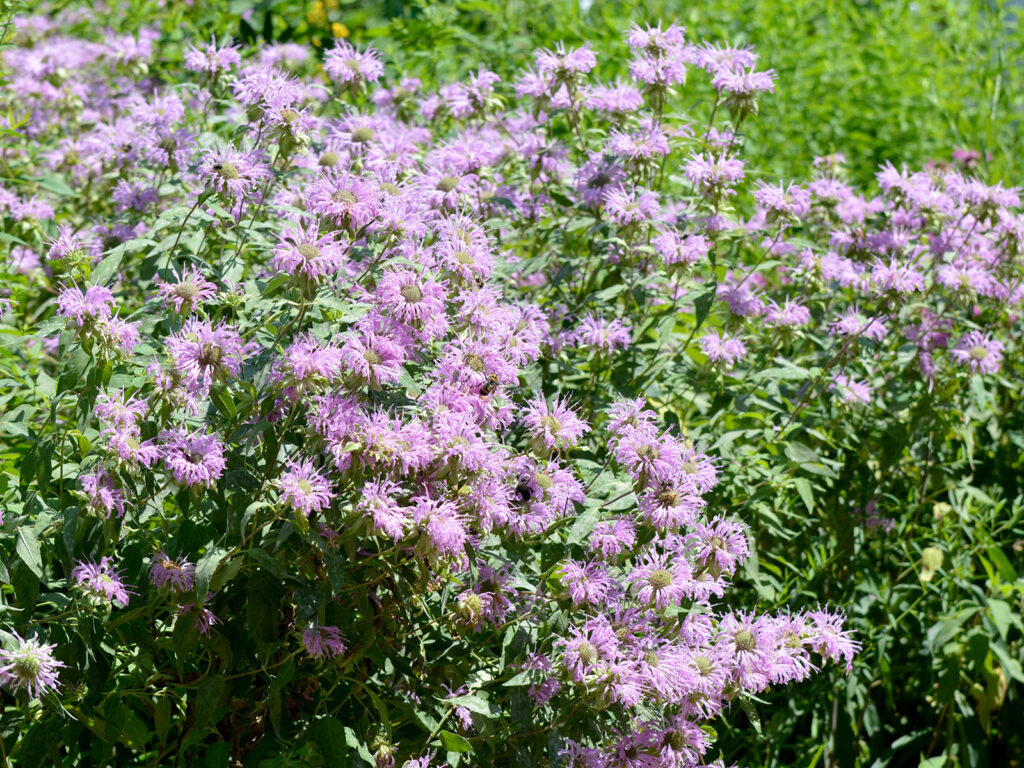
Another of the monardas and a special favorite of bees and especially the hummingbird moth.
This is the plant used in Earl Gray tea. I hate that kind of tea, but I love the plant!
Wildlife: Birds, butterflies, hummingbirds
Deer resistance: High
** SPECIAL VALUE TO NATIVE BEES **
** SPECIAL VALUE TO BUMBLE BEES **
- Learn more:
- Wildflower Center: Monarda fistulosa
- Humane Gardener: Go wild for wild bergamot
Dotted horsemint (Monarda punctata)
What an unusual-looking plant! I love Cullina’s description of its unique color combination: he compares it to that of the kitchen in his old house: “Yes, that bad,” he says. I don’t know if he was serious, but I really like this intriguing plant.
But as he also says, though, I find it to be a short-lived plant. I’ve learned to seek out small seedlings and label them so I don’t pull them up accidentally. I haven’t been able to establish an ongoing patch of these yet, though I’d really like to.
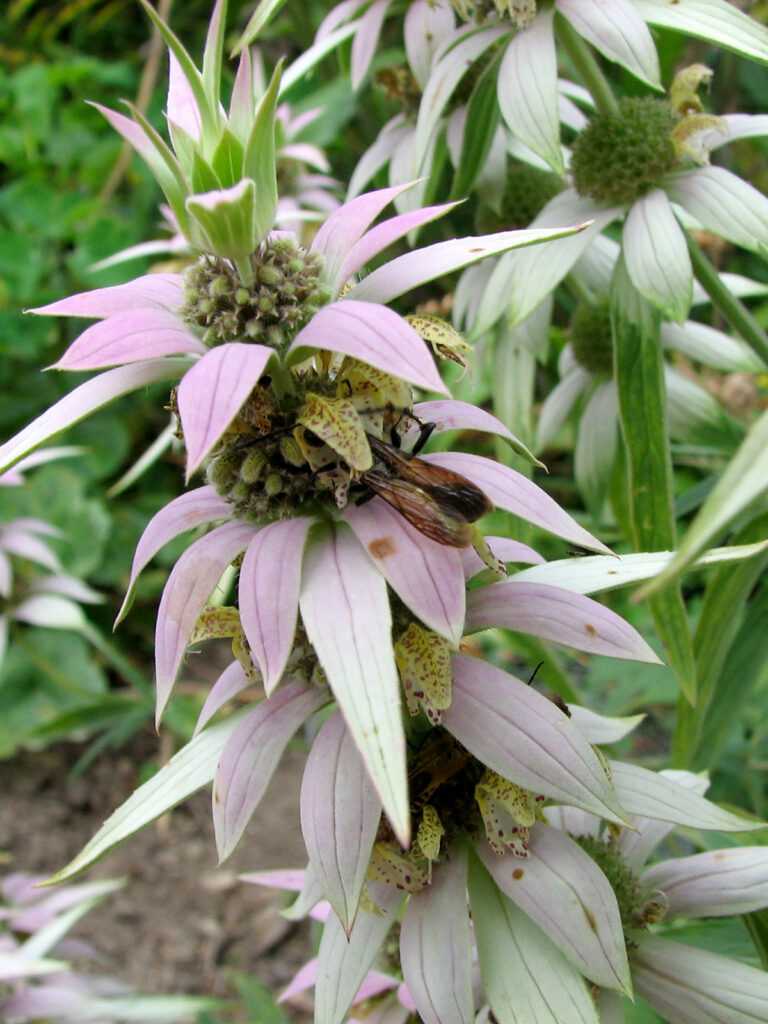
Wildlife: Insects
** SPECIAL VALUE TO NATIVE BEES **
** SPECIAL VALUE TO BUMBLE BEES **
** Attracts predatory or parasitoid insects that prey upon pest insects **
- Learn more:
- Wildflower Center: Dotted horsemint
NOT QUITE NATIVE: Glade mallow (Napaea dioica) -native to PA
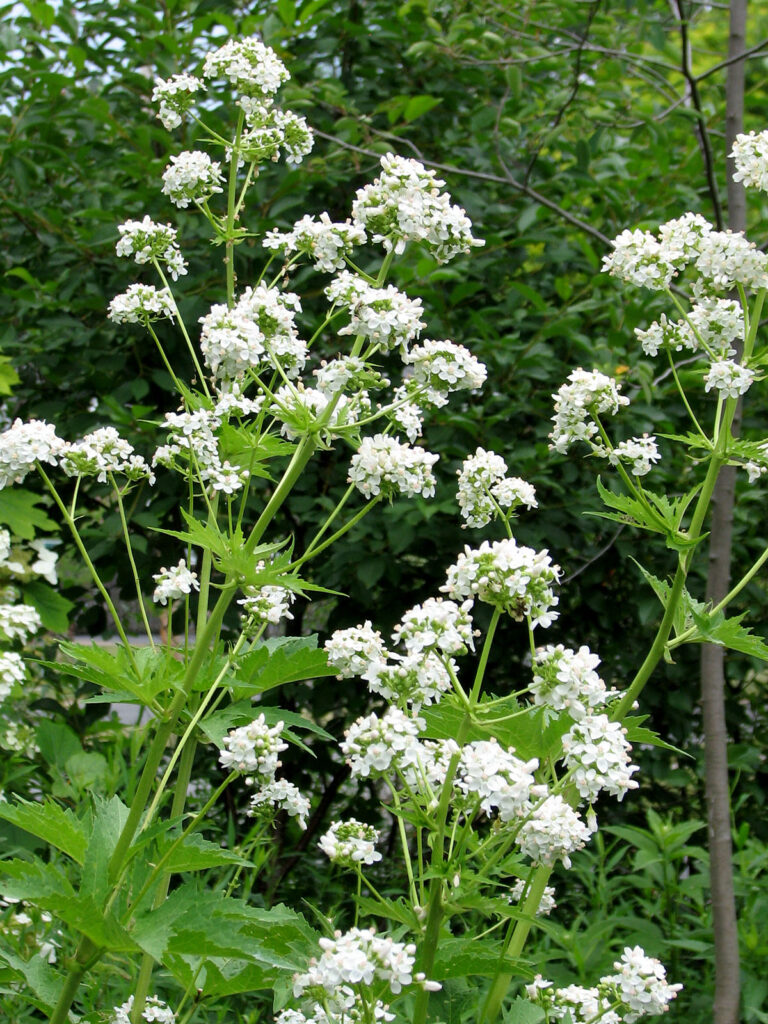
This very tall herbaceous shrub is a butterfly favorite—and also, unfortunately, a Japanese beetle favorite. It’s worth it, though.
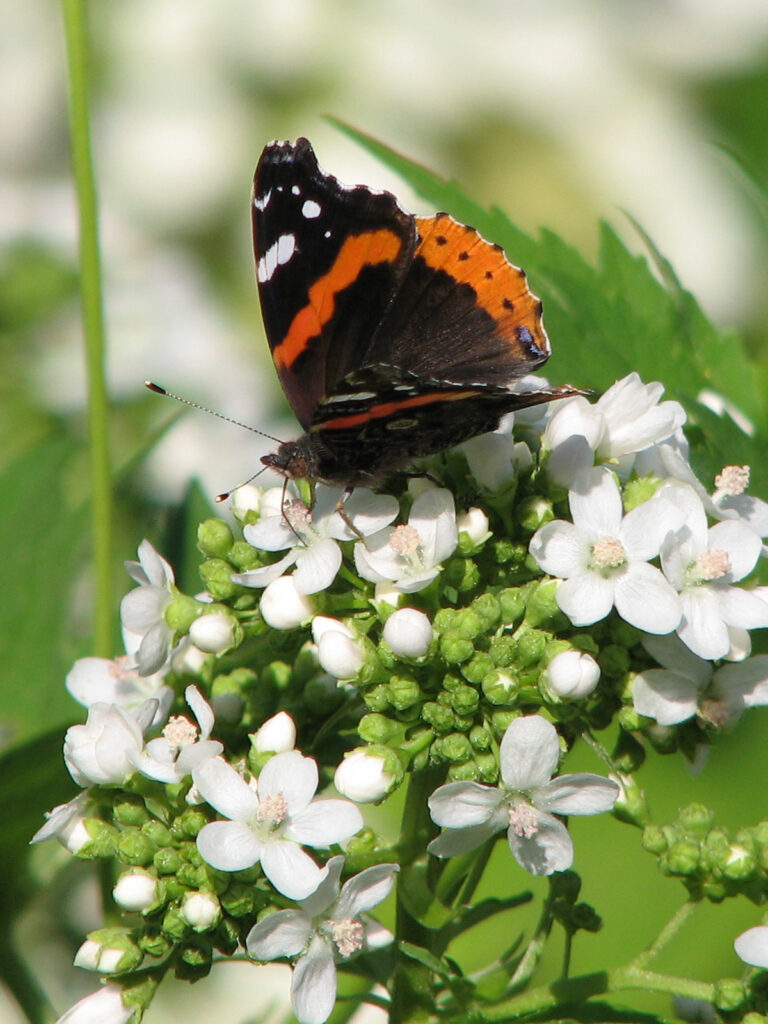
For some reason, the red admiral butterfly is drawn to its flowers. I’m not sure what the attraction is since there are other flowers in bloom at that time, but I always can count on seeing red admirals on the glade mallow.
UPDATE in 2022: I haven’t seen any Red Admirals at all on any plant this year. Many other butterflies are missing, too. Not good news…
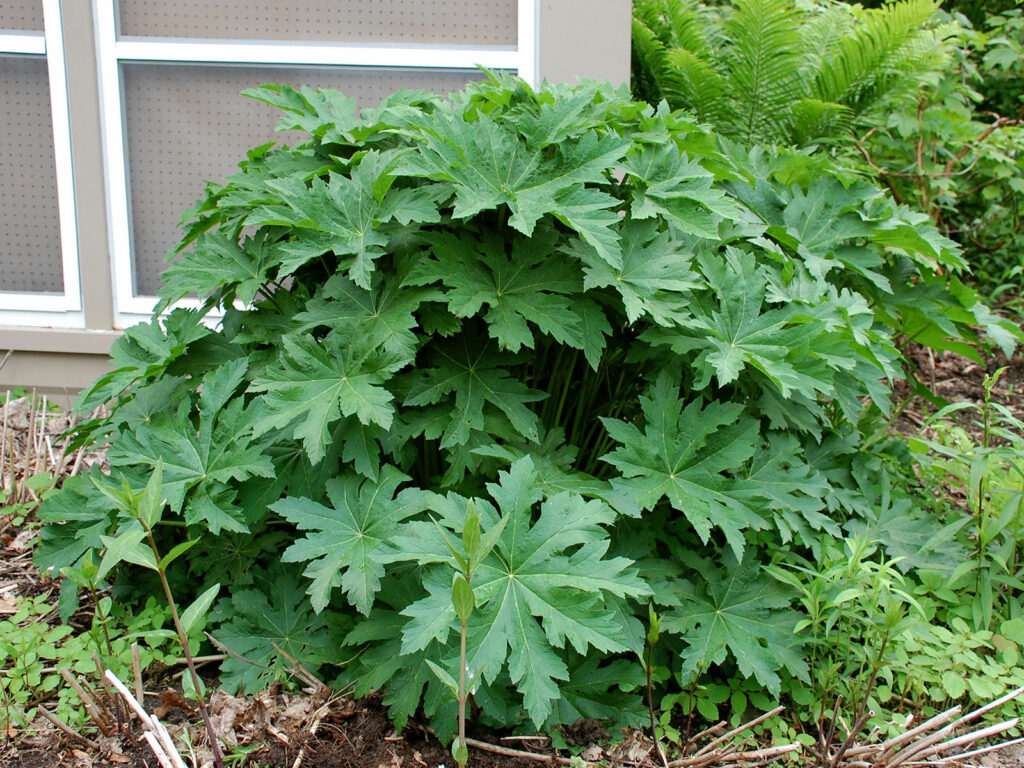
It’s a very large plant, dying back completely in the fall, then springing up into a full-sized bush in the spring. The foliage is very attractive, here shown in late May. It will eventually get much taller each season — about 6 feet altogether.
- Learn more:
- Wildflower Center: Glade mallow
- Univ. of Maryland Extension: Bug of the Week: Mallow munchers
KEYSTONE: Evening primrose (Oenothera biennis)
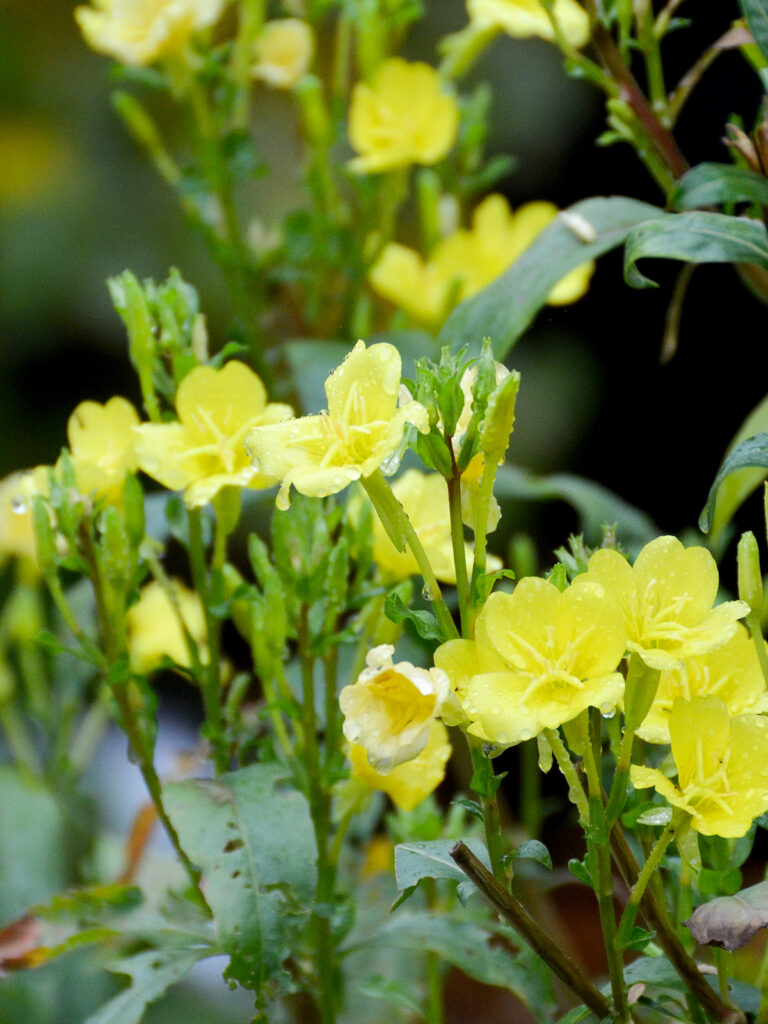
This is a nice, sunny-yellow plant that brightens up the woodland garden.
Wildlife: Birds, hummingbirds
** SPECIAL VALUE TO NATIVE BEES **
- Learn more:
- Wildflower Center: Common evening primrose
- Humane Gardener: Common evening primrose: Not so common, not so prim
KEYSTONE: Sundrops primrose (Oenothera fruticosa)
My mother gave me some of this plant decades ago, a plant which she had received as a gift from another relative decades before that.
Appropriately named, this sunny plant! A big patch of these is certainly eye-catching. At first, I didn’t realize that it’s a native plant, not only native, but a Keystone genus. Good news!
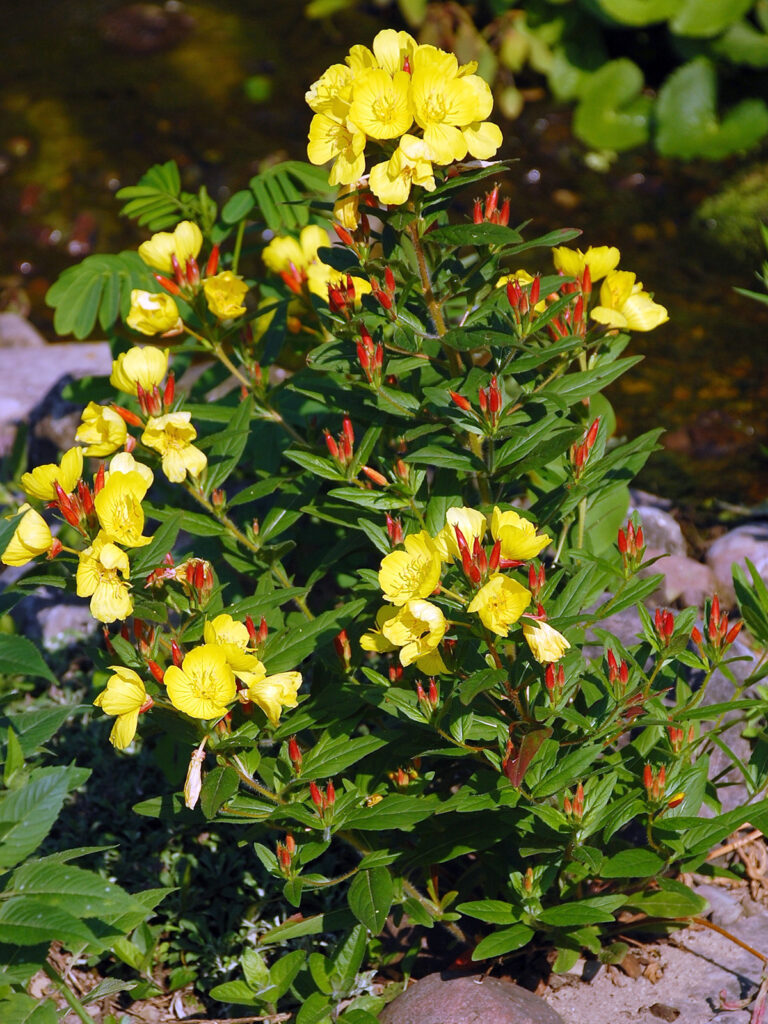
Wildlife: Birds, hummingbirds, and a variety of moths
** SPECIAL VALUE TO NATIVE BEES **
- Learn more:
- Wildflower Center: Sundrops primrose
MIDWEST NATIVE: Pink ladies (Oenothera speciosa)
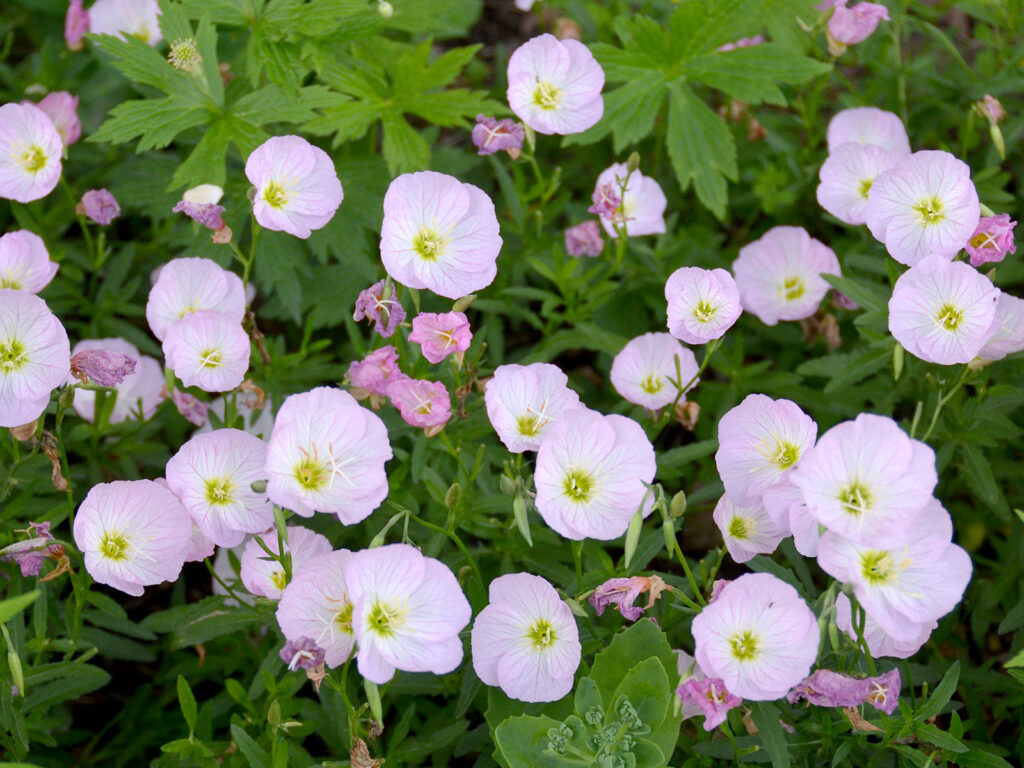
A beautiful pink primrose. It hasn’t been very vigorous in my yard — or maybe it’s another case of my not-so-benign neglect! I recently discovered that this isn’t actually native to the northeast, so that may be why it’s not thriving. I imagine I picked it up at a native plant conference many years ago.
*** Special Value to Native Bees ***
- Learn more:
- Wildflower Center: Pink ladies
